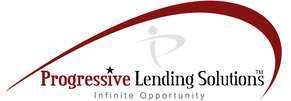Buying a home is likely the biggest purchase you’ll ever make.
And if you’re like much of the population, you’ll need a mortgage to make it happen. That makes it crucial to get an understanding of the mortgage process before you start shopping around.
Here’s how to get a mortgage:
1. Give lenders what they want
There are some key factors lenders look at when considering a mortgage application. If you can hit the mark in these areas, you’re more likely to get approved.
Know your credit score
According to myFICO, the consumer division of the company that invented the FICO score, a credit score of 800 and up is considered exceptional, while 740 to 799 is considered very good. If your score falls into those categories, you’ll likely qualify for the best available interest rates.
A score of 670 to 739 is still considered good, while 580 to 669 is considered fair, and below 580 is considered poor.
For most loans, you’ll need a score of at least 620, according to Freddie Mac.
Your score indicates how good you are at managing debt and consistently making payments on time.
You can pick up your free credit report at myBankrate.com
Know your debt-to-income ratio
How much debt and income you have matter less in and of themselves and more in how they work together. According to Fannie Mae, debt-to-income ratio limits can be as low as 36 percent or as high as 50 percent depending on the lender, the loan type and your strength as a borrower. But those limits apply to what you might hear referred to as the “back-end ratio,” which compares your gross (pretax) income against all your monthly debt payments and your proposed housing payment.
The front-end ratio only compares your proposed housing payment to your monthly debt payments. And a good rule of thumb is that it should be 28 percent or less.
Lenders consider your monthly housing payment to include principal, interest, property taxes, insurance and homeowners association fees.
Let’s say you have $2,000 in monthly debt payments, which might sound like a lot. And it is, if your monthly income is $3,000 — that gives you a debt-to-income ratio of 66 percent, which is too high to qualify for a mortgage.
But if you have $2,000 in monthly debt payments and $10,000 in monthly income, your debt-to-income ratio is just 20 percent.
2. Figure out what you can afford
To get a mortgage, you need to know what you can afford to put down in addition to what you can afford to spend each month.
Here’s how to figure out what you can afford:
Calculate your down payment
You’ll need at least 3 percent of the purchase price to qualify for a conventional loan and at least 3.5 percent of the purchase price to qualify for a Federal Housing Administration (FHA) loan. The only loan that doesn’t require a down payment is a Veterans Administration (VA) loan.
A larger down payment will lower your monthly payment and save you money on interest in the long run. But you don’t want to deplete your savings too much, since lenders will require you to keep about 3 months’ worth of housing payments in the bank. Besides, you’ll want savings on hand to deal with home repairs and emergencies.
Calculate your monthly payment
Your basic monthly mortgage payment consists of principal and interest. Principal pays down the home’s purchase price, while interest compensates the lender for advancing you the money to buy the home.
But your monthly principal and interest payment is far less than the true monthly cost to own a home. There are several other ongoing costs you need to be able to afford, including:
- Homeowners insurance: Lenders will require you to carry homeowners insurance, which protects against things like fires, loss of use, windstorms, hail and many other types of expensive property damage. Even if your lender doesn’t require you to carry homeowner’s insurance, you’ll want it because the cost is a mere few hundred dollars a year to protect the entire value of your home and your personal belongings.
- Property taxes: For as long as you live in your home, you’ll pay property taxes to your local government. Property taxes are based on your home’s value and pay for things like sewers, mosquito control, public schools and street lighting. Expect to pay 1 percent to 3 percent per year depending on where you live.
- Private mortgage insurance: If you make a down payment of less than 20 percent, the lender will consider you a higher-risk borrower than someone who has more of their own money invested in the home. To make up for that risk, you can expect to pay private mortgage insurance, which protects the lender if you stop paying your mortgage. The cost is based on your credit score and down payment.
- Flood insurance: Your lender will require you to carry flood insurance if you live in a high-risk flood zone. In 2015, the average annual premium for a flood insurance policy sold by the National Flood Insurance Program was $700 for all risk areas. You may pay more in a high-risk area.
- Utilities: Your utility bills might go up when you become a homeowner, especially if your new home will be larger. It may cost more to heat and cool. You may also become responsible for expenses that used to be included in your monthly rent payment, such as trash, water and pest control.
- Home maintenance: Budget for both small repairs, like the occasional clogged drain or malfunctioning appliance, and large maintenance items, like replacing the roof, furnace and water heater. A basic rule of thumb is that you’ll spend 1 percent to 4 percent of the home’s value per year. If your home is worth $200,000, expect to spend $2,000 to $8,000 per year maintaining it.
Make sure to calculate what you can afford to spend on a home each month yourself — don’t rely on your lender to do it for you. What your lender says you can afford to spend based on debt-to-income ratios might be more than you can truly afford. Those ratios don’t include all your housing-related expenses or other financial obligations like car insurance, childcare, pet food, health insurance or groceries.
RATE SEARCH: Shop for the best mortgage rates.
3. Pick the best mortgage for your situation
When choosing a mortgage, think about what’s most important to you. That might be having a low monthly payment, long-term savings, predictability or getting a loan despite bad credit. The answer will determine which mortgage you should choose.
Here are the different types of mortgages:
30-year fixed
Monthly payments are low and predictable on a 30-year fixed-rate mortgage, while total interest over the life of the loan is high. For example, the monthly principal and interest payment for a $200,000 loan at 4 percent would be around $955. The total interest over 30 years would be about $143,739.
15-year fixed
With a 15-year fixed-rate mortgage, the monthly payments are higher but still predictable. The difference from a 30-year fixed mortgage is that the total interest over the life of the loan is comparatively low. And interest rates for this type of loan are lower than the rate on a 30-year fixed. For example, the monthly payment for a 15-year fixed $200,000 loan at 3.2 percent would be about $1,400. Total interest over 15 years would be around $52,000.
30-year adjustable-rate mortgage (ARM)
ARMs have lower interest rates during the introductory period. A fixed-rate loan might have a 4 percent interest rate, while an ARM might charge 3.3 percent. But the introductory period is limited. It commonly lasts 3, 5, 7 or 10 years. After that, payments adjust based on a benchmark interest rate, usually the prime rate or LIBOR. After the fixed period, payments might change once a year. A periodic cap limits how much the rate can increase by each year (2 percent is common) and a lifetime cap limits how much the rate can increase by over the life of the loan (6 percent is common). The downside to this type of loan is that there’s no way to know ahead of time how much total interest you’ll pay.
30-year jumbo, 15-year jumbo
These types of loans are the same as a 30- or 15-year fixed rate mortgages, but for larger loans. The limit for a conforming loan (a regular 30- or 15-year mortgage) varies depending on where you live, but it is typically $417,000 in most areas. In some high-cost areas, it’s as high as $625,500. If you need to borrow more than the limit in your area, you’ll need a jumbo loan.
FHA loan
These loans are backed by the Federal Housing Administration. They are usually 30-year loan terms, but shorter terms are available. In addition to the principal and interest, monthly payments include FHA mortgage insurance (calculated as 0.85 percent of the loan balance divided by 12) on 30-year loans with down payments of less than 5 percent. The FHA also charges an up-front mortgage premium of 1.75 percent of the loan amount. Most borrowers roll that premium into their mortgage, which increases their monthly payment further as well as the total interest they pay over time. Despite the extra costs, an FHA loan is often the best option—sometimes the only option—for borrowers with subpar credit and minimal savings.
VA loan
Veterans Administration loans are available as a 15- or 30-year fixed rate mortgage in addition to a 5/1 ARM. These are eligible to millions of veterans, active duty service members and those in the National Guard and reserve units. There’s no down payment required, but without a down payment, your monthly payment and lifetime interest will be higher because you’ll be borrowing more. This loan charges a VA funding fee of 2.15 percent of the loan amount to most borrowers. Interest rates are competitive and there is no monthly mortgage insurance.
RATE SEARCH: Compare mortgage rates on different loan types.
4. Gather and submit key documents
By pulling your credit report, your lender will gather much of the information it needs, such as how much you are required to pay each month on credit cards, student loans, automobile loans and any other debts. But you’ll need to document your income with W-2s from the last 2 years, pay stubs from the last 30 days and tax returns from the last 2 years.
If you’re self-employed, you may need to provide profit-and-loss statements. Proof of unemployment income can help you qualify if you work in a seasonal field where regular layoffs are the norm. You’ll also need to document any disability or retirement income you receive in addition to child support or alimony you pay or receive.
Lenders will also want to make sure you have enough assets to cover a couple months’ worth of mortgage payments after the loan closes, so be prepared with your two most recent statements from a savings or brokerage account.
5. Close on your home loan
Once you complete all of these steps, the lender will be able to finish underwriting your mortgage and prepare your closing documents. Make sure to review all documents carefully and understand what you’re agreeing to. After all, it’s not everyday you buy a home.


